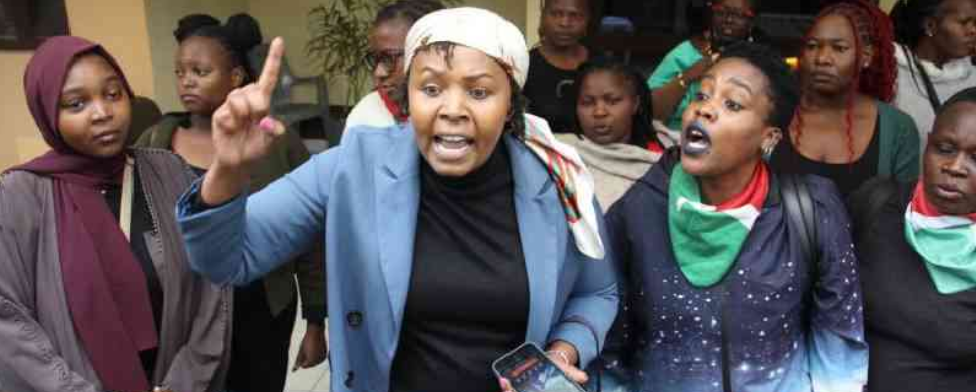Rethink community resettlement action plans
- Irungu Houghton

- Jul 28, 2018
- 3 min read
First published Saturday Standard, July 27, 2018. Kindly reproduced here with permission from the Standard Group
It has been six days since the bulldozers and tippers tore up 2,000 homes in Kibra. The Multi-Sectoral Committee on Unsafe Structures under the Transport Ministry have now declared their intention to take the same action in ten other neighborhoods within the next two weeks. The question many of us who believe in human dignity are asking, is there an alternative way of managing our urban space challenges?
While neither the state nor civic organisations have accurately captured the full displacement of the forced evictions in Kibra, some facts are known. KURA had counted 2,000 households in the 600 meter stretch of the missing road link in the previous week. Rough projections suggest at least 10,000 men, women and children were made home-less this week. Seven schools were either demolished or affected, leaving at least 2,000 children school-less. At least ten community centers, clinics and places of worship were destroyed, leaving the community resource-less. The cost to this neighborhood has been high.
Walking in the wake of powerful bulldozers and the National Police Service this week, I failed to see any other arm of Government. There were no education officers advising parents where to take their children to schools. There were no housing officers registering people for the housing plans we hear, will form part of the Four Pillars. There were no offers of temporary shelter or advice of places to relocate to.
There was no mobile Huduma centre to assist people with lost national identification papers or humanitarian officers and first aid responders in case someone got hurt or went missing. There were no trauma counsellors to assist those that might have been disturbed by the destruction of their homes and livelihoods. The list of people affected by the road project was not used to assess the different impact on the elderly, people with disabilities or special needs.
This is not to say that the Government did not invest thought and resources. 600 armed police officers were woken up in the middle of the night and ferried at dawn to Kibra. Bulldozers, excavators and tippers worth at least 16, 12 and 90 million shillings respectively were deployed to displace this otherwise peaceful community. The Transport Ministry literally turned a densely populated neighborhood into a building site as if people were indistinguishable from their property.
Displacement is regulated under an Act of Parliament. The Prevention, Protection and Assistance to Internally Displaced Persons and Affected Communities Act No. 56 of 2012 expressly calls for a human rights approach to displacement in the case of conflict, human rights violations, disasters and large-scale development projects. There are also guidelines on how evictions must be prepared for and managed.
There have been six demolitions of neighborhoods and markets in this month alone. In this context of this fact and our laws and guidelines, the National Government faces an ethical and legal moment. Displacing neighborhoods and homes that have encroached on road reserves, forests and other public spaces requires deeper reflection and corrective action. In light of the announcement of the Multi-Sectoral Committee on Unsafe Structures and the Kenya Urban Roads Authority to repeat the Kibra action in ten other urban neighborhoods, this is now very urgent.


According to the notices, the Transport Ministry is now targeting at least ten other neighborhoods including Deep Sea (Parklands), Accra, Ngara and Kenya Power and Kenya Railway Reserves in Kaloleni, Makongeni, Mbotela, Mutindwa, Dandora and Kenyatta University (Kamae).
Modern highways and modernization projects will not transform community encroachment on public and private land. In the absence of participatory planning and investment in mass housing, we are simply doing what the colonials did. The colonial state displaced poor African subjects to make way for projects that favored their developers and the elites they served. The race bar may have dissolved today, but the class bar remains.
No person deserves to live in an unsafe and poorly serviced environment. To transform the shacks and slum dwellings into dignified and affordable housing, the State must invest in humane ways of relocating communities and mass housing. This week, community, elected and civic leaders and the United Nations raised their voice against the Kibra evictions. Should the Transport Ministry proceed to demolish the ten other neighborhoods, voices of conscience will grow in opposition.
It is time to rethink how the National Government designs and implements community resettlement action plans. Our international and national human rights obligations and our national conscience law requires it. Failure to do this will lead to more forced evictions, torn and displaced communities and overburdened County Governments.
You can take action now to avoid a repeat of the violence we saw in Kibra here.
Post Article note:
KURA has publicly committed to disclosing publicly the list of people that were assessed and the Education Ministry has committed to relocate schools after the public uproar the evictions generated.





Comments